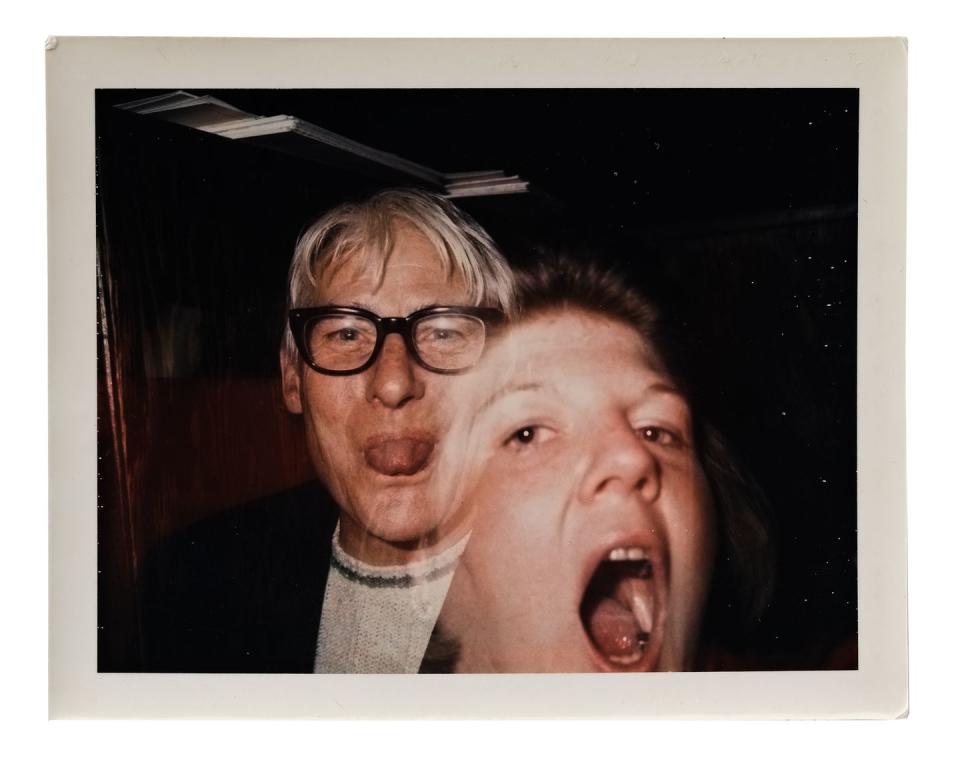Brigid Berlin Is Her Own Superstar, Thank You Very Much

- Oops!Something went wrong.Please try again later.
To say Brigid Berlin was a complicated character would be an understatement. While Berlin was an artist, an actor, and an all-around creative whirlwind, she might be best remembered for her role in the court of Andy Warhol, for whom she was a close friend and collaborator. But she also straddled another divide: despite her outsized presence among the Downtown art world of the 1960s and ’70s, Berlin was also a child of privilege. Her mother was a well-known New York City social force and her father was an executive at Hearst (which publishes Town & Country)—a world Brigid rejected in her youth but later in life came to embrace.
These complications might be at the heart of what makes her such a fascinating character, and help drive the excitement around The Heaviest, an exhibition of work by Berlin on view at New York City’s Vito Schnabel Gallery through August 18.
Alison M. Gingeras, who organized the exhibition, explains, “I had written an essay some years ago for the show that was called Warhol Women, and I wrote about Brigid as a major chapter in that. I was interested in the idea that while everyone discusses the iconic muses that appear in Warhol's work, women behind the scenes were so essential to his practice and his life—and Brigid is really the star of that story.”

Indeed, Berlin was essential to Warhol’s work tape recording his conversations and using Polaroid cameras, but her own work goes much further. The Heaviest featured Berlin’s photographs, writing, paintings (some made using her own body as a brush), and memorabilia in addition to portraits featuring her as a subject and posthumous tributes by contemporary artists including Francesco Clemente and Jennifer Rochlin. The goal is to establish Berlin as an important artist in her own right and not simply a star in the Warhol orbit.
“We found documentation of this major show she had in 1970 at the Heiner Friedrich Gallery in Germany, which was one of the most avant-garde places to show in Europe,” Gingeras explains. “She really was a full-fledged artist. It's not just the blatant misogyny that comes with the Warhol cult that has overshadowed the women in his circle, but also Brigid's own internalized misogyny, because she was always looking for the approbation of male artists. She wanted to be one of the guys.”

A large part of Berlin’s oeuvre consists of recordings she made in the 1970s, many of which have only been exhibiting sparingly and were otherwise stored in her closet, but the exhibit also includes photography by Berlin, needlepoint pillows she created, and books—some featuring poetry, other showcasing her fascination with the human form. “There's this really substantive archive,” Gingeras says, “that is a time capsule of one of the most tumultuous periods of American history.”
The Heaviest explores Berlin as an artist on her own and explores how she made her way in the very different worlds of the downtown cultural scene and uptown society, but above all, it’s a portrait of a singular creative mind who followed her own path to the incredible places where it took her. “It's fascinating to piece together everything from her birth announcement and her baby bracelet to the things that she had on her nightstand when she died,” Gingeras says. “That's really the full gamut of the show.”
You Might Also Like

